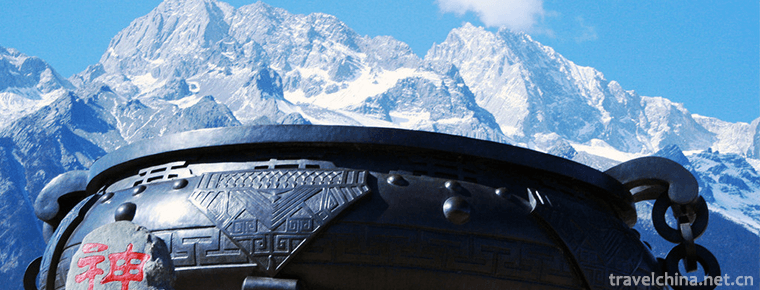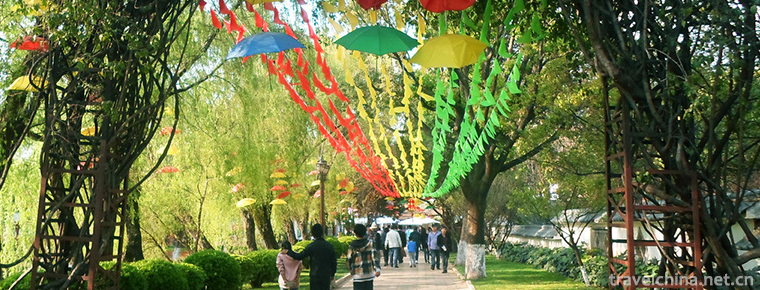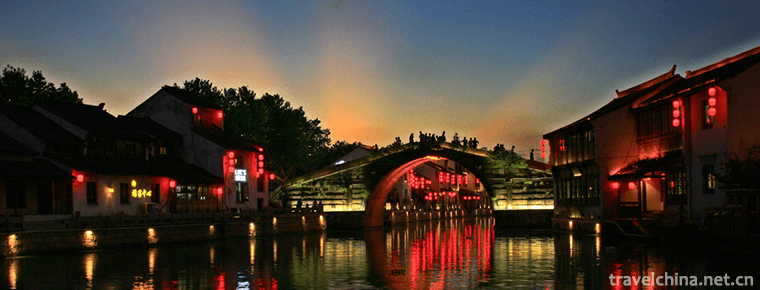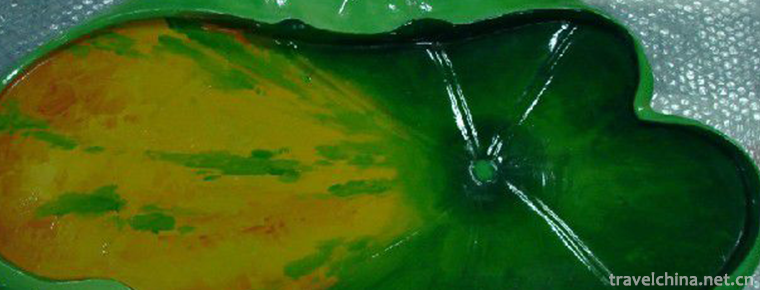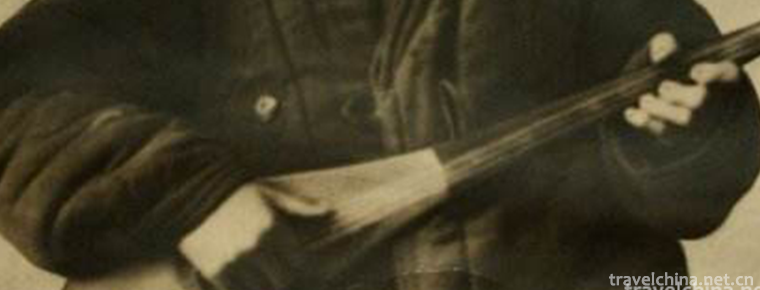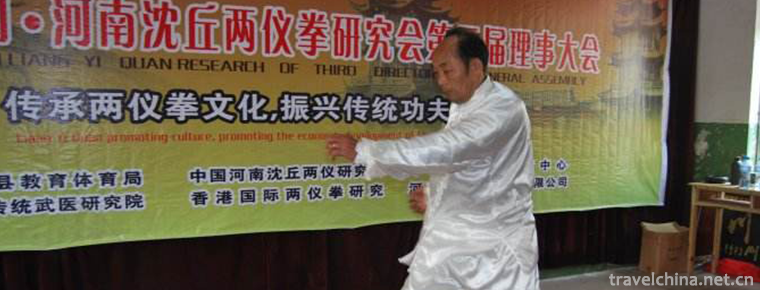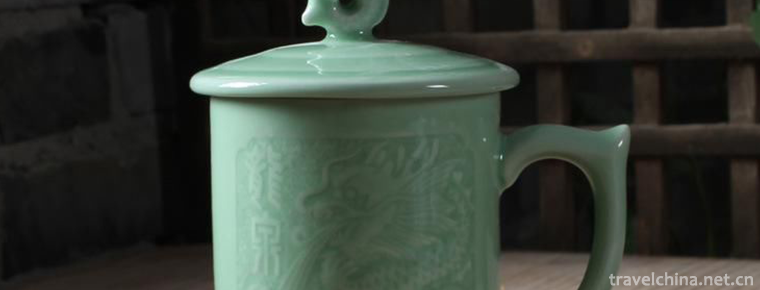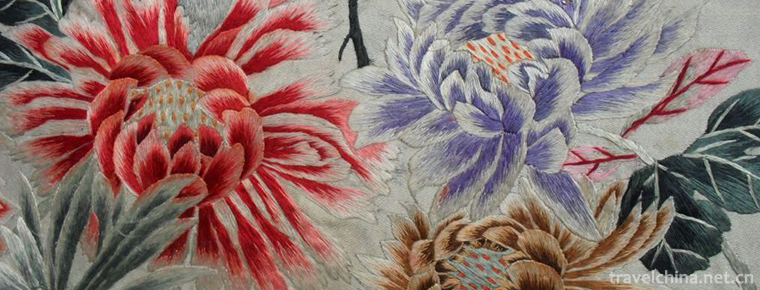Wenshu Temple
Wenshu Temple
Wenshu Temple is located in Qingyang District of Chengdu City. It was founded in the Daye period of Sui Dynasty (605-617). In 1697, the 36th year of Kangxi raised funds to rebuild the temple, which was renamed Wenshu courtyard. It is one of the national key Buddhist temples determined by the State Council, the first of the four Zen forests in the upper and lower reaches of the Yangtze River in China, and a key cultural relic protection unit in Sichuan Province. It is also a Buddhist holy land integrating Buddhist relics, ancient garden buildings, pilgrimage and sightseeing, and religious cultivation.
Wenshu courtyard covers an area of more than 200000 square meters. The existing buildings are typical of the ancient architectural style of the Western Sichuan plain. All wooden buildings, with six main halls facing the central axis of the Mountain Gate in turn, are magnificent and magnificent.
Historical evolution
Manjusri has a long history. It is said that in the Sui Dynasty, the beloved concubine of Yang Xiu, the son of Emperor Wen of Sui Dynasty, was built by the then "Saint Ni" Xinxiang temple.
In the Five Dynasties, it was renamed Miaoyuan pagoda.
It is still called Xinxiang temple in Song Dynasty.
According to the records of Chengdu County, the temple of Xinxiang was destroyed by the army fire in the last years of Ming Dynasty. The buildings were burned, only 10 iron cast statue of the ring protection and two thousand year old fir, which survived the robbery.
In 1681, in the 20th year of the reign of Emperor Kangxi of the Qing Dynasty (1681), Zen master tzudu came to the deserted temple and built a cottage between the two trees. He practiced hard and practiced Buddhism. He traveled in all directions for several years, which made him famous.
From the 36th year of Kangxi to the 45th year of Kangxi (1697-1706), officials, gentry, soldiers and civilians donated money to rebuild the temple. During the Jiaqing and Daoguang years, master Benyuan, the abbot of Wenshu academy, purchased 82 stone pillars, rebuilt and expanded the main hall, forming the current scale.
In modern times, Wenshu courtyard was flourishing. All previous abbots opened altar and preached precepts here, and set up Buddhist academies and study centers to cultivate monks. During the Anti Japanese War, eminent monks such as Dade Buddha source, Taixu and Nenghai came here to give lectures.
After the founding of the people's Republic of China, the people's government has repeatedly allocated funds to repair temples.
In 1983, it was designated by the State Council as a national key Buddhist temple in the Han area.
The origin of temple name
Wenshu temple was built in Daye period of Sui Dynasty. It went through the Tang, Five Dynasties, song, yuan and Ming Dynasties. It was called xinxiangyuan and xinxiangsi in the past. It was not renamed Wenshuyuan until 1697, the 36th year of Kangxi in Qing Dynasty.
About the 20th year of the reign of Emperor Kangxi (1681), Zen master Tzu came to the abandoned site of xinxiangyuan and vowed to repair the Taoist temple where his shaving master, xinxiangjingxu, had once lived. Because the xinxiangyuan was destroyed by the war in the late Ming Dynasty, Zen master Zidu lived between two ancient Chinese fir trees. Soon after, the Zen master was extraordinary in his meditation, and the people thought that he was the "Manjusri Bodhisattva" in this world. Because of the people's admiration for Zen master Zidu's Secret walk, they felt the full support of the government and scholar officials, so they renamed it Wenshu yuan.
Because of his noble virtue and reputation, Emperor Kangxi admired him very much after hearing about it. He once sent three edicts to invite him to Beijing, but he declined politely. In the 41st year of Kangxi (1702), Emperor Kangxi granted a silk banner of "Konglin" and sent a special envoy to Wenshu court. Therefore, Wenshu hall is also known as "konglintang".
Architectural distribution
architectural composition
Wenshu hospital is located in the north and south, covering an area of more than 200000 square meters. The temple is five fold. When you enter the mountain gate, you will find the Tianwang hall, the three great masters hall, the Mahavira hall, the shuotang hall, and the Sutra hall. It is integrated with the bell tower, Zhaitang and porch on both sides of the East and the West. It is solemn and solemn, simple and spacious. It is a typical Qing Dynasty building. On both sides, there are Zen, temple, guest hall, Zhai, Jie and nianfo hall, and official room. There are long corridors and dense pillars between the halls, forming a closed quadrangle. There are more than 190 buildings in the hospital, with a construction area of more than 20000 square meters. The house is made of wood and stone, and the stone on the column base is finely polished; the bucket arch on the column is exquisitely carved.
Main buildings
When approaching Manjusri courtyard, the first thing you can see is the screen wall opposite the three doors. According to records, the couplets of "Manjusri court" and "wisdom, wisdom and deep heaven and earth, zongfengyue ancient and modern" are handwritten by Zen master Tzu Tu.
The first entrance hall consists of three gates, which were built by Zen master Tzu Tu and rebuilt by monk Benyuan to worship Maitreya Bodhisattva and the four heavenly kings. The hall of the three great masters is the second Hall for worshiping the three great masters of Guanyin, Manjusri and Puxian.
Daxiong hall is the third hall built by Zen master Tzu Tu and rebuilt by monk zhangbo. Daxiong hall is 10.56 meters high, with single eaves resting on the top of the mountain. In the hall, there are tall glass Xi, offering a bronze statue of Sakyamuni Buddha; on the left and right are bronze statues of Gaye and Ananda, all cast in the ninth year of Daoguang.
The fourth hall is the shuotang, which is said to be the site of the ancient Xinxiang temple. In the center of the hall, there are brick altar, and the word "empty forest" in Kangxi's handwriting is inlaid between the walls in the middle of the hall. Under the central canopy of the hall, there is a pharmacist Buddha and a dozen medicine fork generals on the left and right.
The chenjing building is the fifth hall. It was founded by Zen master Zidu and rebuilt by monk Benyuan in the fourth year of Daoguang. Chen Jing building is divided into two floors, 15.84 meters high. It is the place where the temple collects scriptures and important cultural relics.
In 1997, Kuanlin, the 17th generation abbot of Manjusri monastery, finally built Manjusri Pavilion on the central axis of the temple, covering an area of 1000 square meters. It is composed of the first floor of "Konglin lecture hall", the second floor of Konglin Buddhist Library and the third floor of Wanfo hall.
In addition, there are bell and Drum Tower, ancestral hall, zhunti hall, Yuantong hall, jade Buddha Hall, Sansheng temple, Wuguan hall, etc. in the 1980s, Kuanlin monk vowed to build a thousand Buddha Peace Pagoda, praying for world peace; the release pool and east-west garden also make the temple green trees and fragrant with flowers and birds. It is not only a holy land for practitioners, but also a leisure place for the people around the temple.
Tourist attractions
Two saints of kongfu forest
"Two saints in the empty forest" -- the Buddhist relic and the parietal bone relic of master Xuanzang.
Buddha's relic
Buddhist relic is one of the most precious sacred objects in Buddhism. There is a Buddha bone relic in chenjing building of Manjusri Academy. In 1920s, when dadneng maritime master in Shuzhong paid homage to Indian Bodhisattva, Buddhist master fojin, a monk from Xiyang, Chongqing, was in charge of incense and fire in Bodhisattva. Master fojin invited the master to bring the relic back to Manjusri temple for offering up to now. This Buddhist relic was once hidden in a niche in the temple. In recent years, the stupa has been built for public worship.
Buddhist monk Xuanzang's parietal bone relic
On the left side of the chenjing building in the temple, there is the parietal relic of master Xuanzang. It was discovered in Baoen temple in Nanjing in the 1940s. Because Chengdu is the place where Master Xuanzang was ordained after becoming a monk, he also lived here for five years. Because of this, he asked for a sacrifice from Nanjing. Master Xuanzang was praised as "the backbone of the nation" by Mr. Lu Xun for his spirit of not fearing hardships and dangers to go to the west to seek development and not to explain and teach wholeheartedly for the world. Therefore, this parietal relic is not only a portrayal of master Xuanzang's spirit, but also a symbol of "national backbone".
Kong Lin Ba Guan
TIANTI zhanbang
In 1720, Emperor Xuanye of the Qing Dynasty wrote a banner with the word "Kong Lin", with the middle seal of "the treasure of Emperor Kangxi's calligraphy" and Zhu Wenxi's seal on one side. On the left side, it reads "mid winter in the year of Renwu in the 41st year of Kangxi", and on the right, it reads "chaocun, a monk of Wenshu Academy in Sichuan Province". Therefore, the word "empty forest" is also known as "empty forest hall".
Burmese jade niche
There is a Burmese jade Buddha in the shrine of the grand hall. The Jade Buddha on the left is in April 1923. The monk Xing Lin and Shang Yuan came back from Myanmar. The Jade Buddha on the right side was asked back by monk Dengyun from Myanmar's grand Pagoda in 1938.
The caves are full of light
The Manjusri courtyard has a niche for the statues of Sakyamuni and Buddhas. In the autumn of 1922, monk Chan'an, the 15th generation abbot of Wenshu academy, excavated the site of Baoguo temple in the western suburb of the city. This group of statues was created by Kangsheng in 523 A.D. with a standing statue of Sakyamuni carved in the center of the front, and the story of vimo Shiji on the back. There are 60 human figures in the whole niche, which are of high artistic value. They are an important achievement of stone carving art in Sichuan Province. Later, they were collected in the Sichuan Provincial Museum and were listed as fine objects.
Shuangshan Biao Rui
Two ancient Chinese fir trees, each 15 meters high, are the oldest ancient trees in the temple. It is said that these two ancient Chinese fir trees are a pair of big trees like Huabiao in front of the three gates of the ancient xinxiangyuan. In those years, Zen master CIDU planted grass between the two trees. The original tree died in 1963 and is now replanted.
Gorgeous Tian Yi
Tianyi, also known as Tian Fei cassock, is embroidered by Tian Fei, a favorite of emperor Chongzhen of the Ming Dynasty. There are 248 statues of Buddha. It is said that Tian Fei was a native of Yilong, so she was once collected in yilongxi temple, and then transferred to chenjing building of Wenshu courtyard after 1922.
Tongue and treasure
There are four blood Sutras in the temple, namely: Huayan Sutra, the blood book of Shaoji monk during the Qianlong period of Qing Dynasty (1736-1795); fahua Sutra, which first worshipped the blood book of monks; the Lengyan Sutra, the blood script of enlightened monks; and the fahua Sutra, which was completed in the 27th year of Daoguang, and is unknown. The four Buddhist scriptures are made by monks who wish, pierce their tongues to take blood and copy them for a long time.
Hair embroidered with treasure
During the Jiaqing and Daoguang years of the Qing Dynasty (1796-1850), the daughter of Yang Yuchun, the governor of Shaanxi and Gansu, vowed to take her hair and cut it with a gold knife. After that, she embroidered the statue of water moon Guanyin on white satin. It is 104.4 cm long and 41.2 cm wide.
A glimpse of gold
In 1882, Yang Guangqi, the great grandson of Yang Yuchun, governor of Shaanxi and Gansu, vowed to pray for his father's birthday. This exquisite pagoda is 110 cm long and 35.5 cm wide. The author uses the full text to form a seven level pagoda, and crowns the only "tower" on the top of the pagoda. The Scriptures are all written in 4mm small books. The regular script is fine and straight, and the design and production are unique.
Cultural value
There are many cultural relics and treasures in Wenshu Academy. There are more than 300 Buddha statues in the temple, including steel casting, yarn shedding, wood carving, stone carving and clay sculpture. In terms of age, there are stone carvings of the Liang Dynasty, iron ring gods of the Tang and Song Dynasties, bronze statues of the Qing Dynasty, and jade Buddha of Myanmar. These statues have high cultural and artistic value, and provide valuable information for us to study ancient sculpture, casting and other crafts. The temple also treasures calligraphy and painting since the Ming and Qing Dynasties. The most famous is the ink of "empty forest" given by Emperor Kangxi to Wenshu temple in 1702, and the banner of "sea moon" by Mi Fu, a calligrapher in Song Dynasty. In addition, there are also Buddhist relics such as the Indian palm leaf Scripture, the skull of Xuanzang master in the Tang Dynasty, the gilded Scripture slips of Japan in the Tang Dynasty, the thousand Buddha cassock, the hair embroidered Guanyin, the tiaosha Manjusri and the tongue blood containing treasure (such as the Huayan Sutra, the Lengyan Sutra and the fahua Sutra).
The library also treasures the calligraphy of Mo long in Song Dynasty, Po Shan in Ming and Qing Dynasties, Zhang Xue's paintings in blue eyes and bamboo Zen, as well as calligraphy and painting works by calligraphers he Shaoji, Zheng Banqiao, Zhang Daqian and Feng Zikai.
After liberation, the courtyard was repaired and painted many times, and thousands of flowers and trees such as gingko, Cinnamomum camphora, plum blossom and Magnolia were planted. Besides, a tea house and a special vegetarian restaurant "xiangzhaitang" were added, which made it a very popular Buddhist and sightseeing place.
religious activities
The Wenshu academy, guided by the promotion of the thought of "human Buddhism", popularizes the spirit of Buddhism in all fields of society as its purpose, practices the spirit of Buddha compassion and helps the world, and improves the overall quality and social value of Buddhism.
Regularly carry out the following activities:
March 9: Buddhist monk Xuanzang worships Dharma Association
March 23: Guanyin Christmas lantern praying ceremony
April 5: Qingming memorial ceremony
May 1: the ninth Temple Life Experience Camp
May 10: Buddha's birthday and bathing Buddha Dharma meeting
Mid July: the eighth wisdom tour meditation camp
July 19: Avalokitesvara Christmas service
From August 14, Meng LAN reported to Lu Shenghui
September 12: Mid Autumn party
October 1: 10th Temple Life Experience Camp
The twelfth lunar month of the lunar calendar
Tourism information
Transportation: Wenshuyuan is located in Wenshuyuan street, only 10 minutes away from Luoma shopping center. You can get there by bus No.16, 55, 64, etc.
Best season: suitable for all seasons.
Suggestion: 2-3 hours
Admission: Free
Opening hours: 9:00-17:00

-
Mount Longhu Scenic Area
Located in Yingtan City, Jiangxi Province, the Longhu Mountain Scenic Area is 18 kilometers away from the city center. It consists of six scenic spots: Xianshuiyan, Longhu Mountain, Shangqing Palace.
Views: 179 Time 2018-12-08 -
Dongjiang Lake Tourist Area Coconut City
Dongjiang Lake Scenic Tourist Area is located in Zixing City, Hunan Province. It is a national scenic spot, a national 5A scenic spot and a national wetland park..
Views: 186 Time 2018-12-12 -
Grand View Park
Daguan Park is located in the Dianchi Lake, about 2 kilometers west of Kunming City. It was built in the first year of Hongwu in the Ming Dynasty (1368 A.D.). In the thirty-fifth year of Emperor Kangx.
Views: 189 Time 2019-01-06 -
Qingming Bridge Ancient Canal Scenic Area
Qingming Bridge Ancient Canal Scenic Area is located at the southern end of Wuxi city center, covering about 44 hectares of scenic area. The scenic spot is composed.
Views: 161 Time 2019-02-07 -
Taining World Geological Park Fujian Province
Fujian Taining World Geological Park, located in Taining County, Sanming City, northwest Fujian Province, covers an area of 492.5 square kilometers, of which Danxia landform.
Views: 148 Time 2019-02-13 -
Fuzhou bodiless lacquerware decoration skills
Fuzhou bodiless lacquerware decoration technology, Fuzhou, Fujian Province, local traditional handicraft, one of the national intangible cultural heritage..
Views: 173 Time 2019-04-30 -
Kirgiz Kumzi Art
Kumzi is an ancient plucked instrument unique to the Kirgiz people. The meaning of "Kumzi" Kirgiz people is "beautiful musical instrument". Mainly spread in Xinjiang Kirgiz Autonom.
Views: 170 Time 2019-05-09 -
Two instruments boxing
Liangyi Quan originated from Zhouyi, which said, "It's so easy to have Taiji. It's the birth of Liangyi". (Liangyi Quan) is also called Liangyi Point-through-Qishen Quan. Its name is formed .
Views: 166 Time 2019-05-13 -
Firing Techniques of Longquan Celadon
Longquan celadon firing technology, the traditional ceramic technology of Longquan City, Lishui, Zhejiang Province, is one of the national intangible cultural heritage..
Views: 118 Time 2019-05-14 -
Suzhou embroidery
Suzhou embroidery is the general name of embroidery products in Suzhou area. Its origin is in Wuxian, Suzhou. Now it has spread all over Wuxi, Changzhou and other places. Embroidery and silkworm reari.
Views: 121 Time 2019-06-17 -
Deyang post and Telecommunications
By the end of 2018, the total telecom business of Deyang City has reached 12.95 billion yuan, with 701000 fixed telephone users and 3.998 million mobile phone users. The total length of optical cable at the end of the year is 138000 skin kilometers..
Views: 309 Time 2020-12-14 -
Nanchong City honor
"Three products" strategy demonstration city of consumer goods industry, charming city with Chinese characteristics, national garden city and excellent tourism city in China.
Views: 291 Time 2020-12-17

